It did not become important until Lysimachus, King of Thrace, took possession in 301 BC, but soon after his lieutenant Philetaerus enlarged the town, the kingdom of Thrace collapsed and it became the capital of the new kingdom of Pergamon which Philetaerus founded in 281 BC.
As a consequence of its rise to power, the city expanded greatly. Until 188 BC, it had not grown significantly since its founding by Philetaerus, and covered c. 21 hectares (52 acres). After this year, a massive new city wall was constructed, 4 kilometres (2.5 mi) long and enclosing an area of approximately 90 hectares (220 acres).
When Attalus III (138–133 BC) died without an heir in 133 BC, he bequeathed the whole of Pergamon to Rome in order to prevent a civil war. It reached the height of its greatness under Roman Imperial rule and was home to about 200,000 inhabitants.
Modern location: Ruins
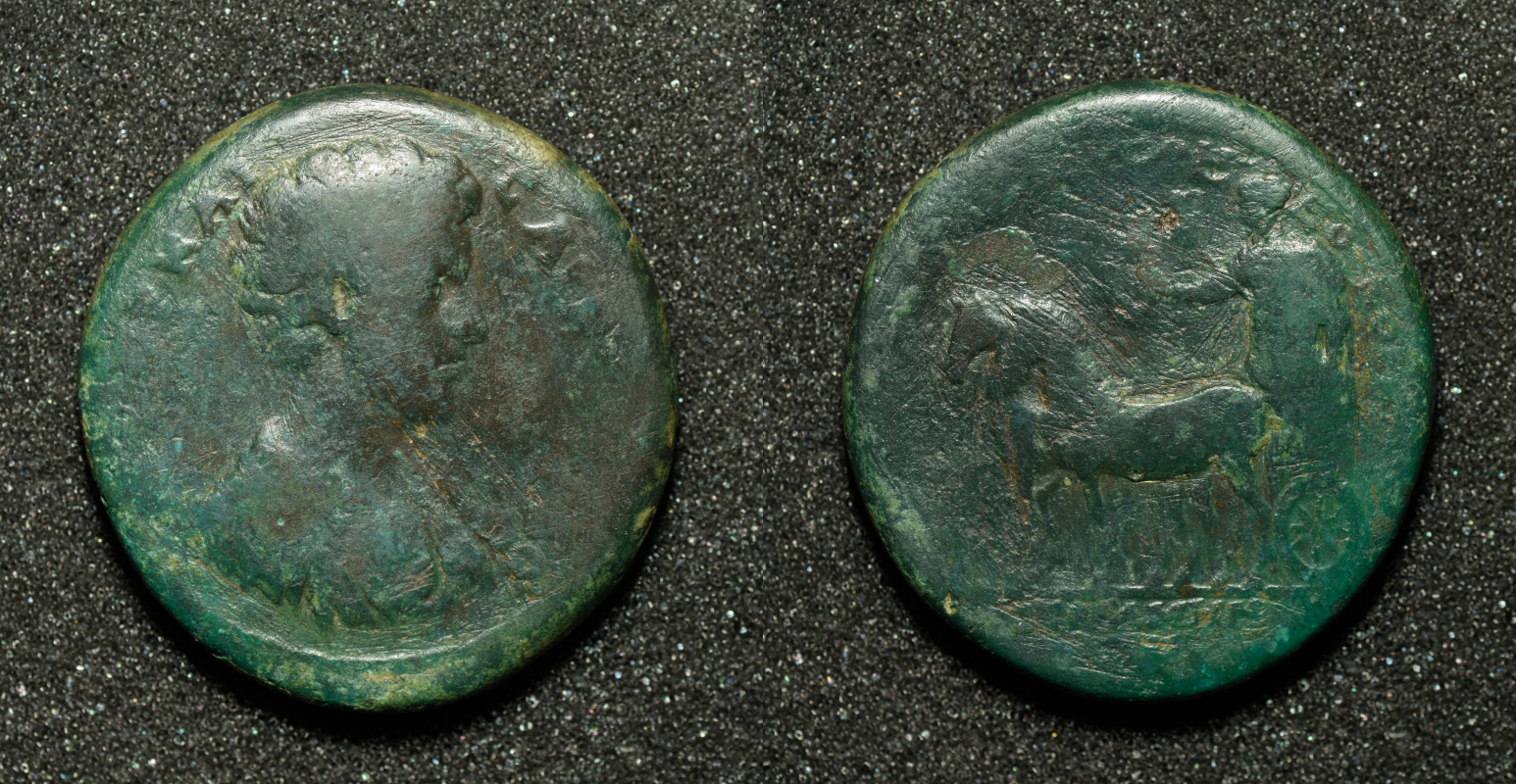
Reverse: [?] ΝΕΟΚΟΡΩΝ, emperor (Marcus Aurelius) standing in biga, l., extending arm
Die Orientation: -
Weight: -
.png)
Reverse: ΛΕVΚΙΩΝ, Bare head of Lucius facing right
Die Orientation: 12 H
Weight: 3.79 g
.jpg)
Reverse: ΔPOVΣOΣ KAIΣAP, Bare head of Drusus facing right
Die Orientation: 11 H
Weight: 2.92 g
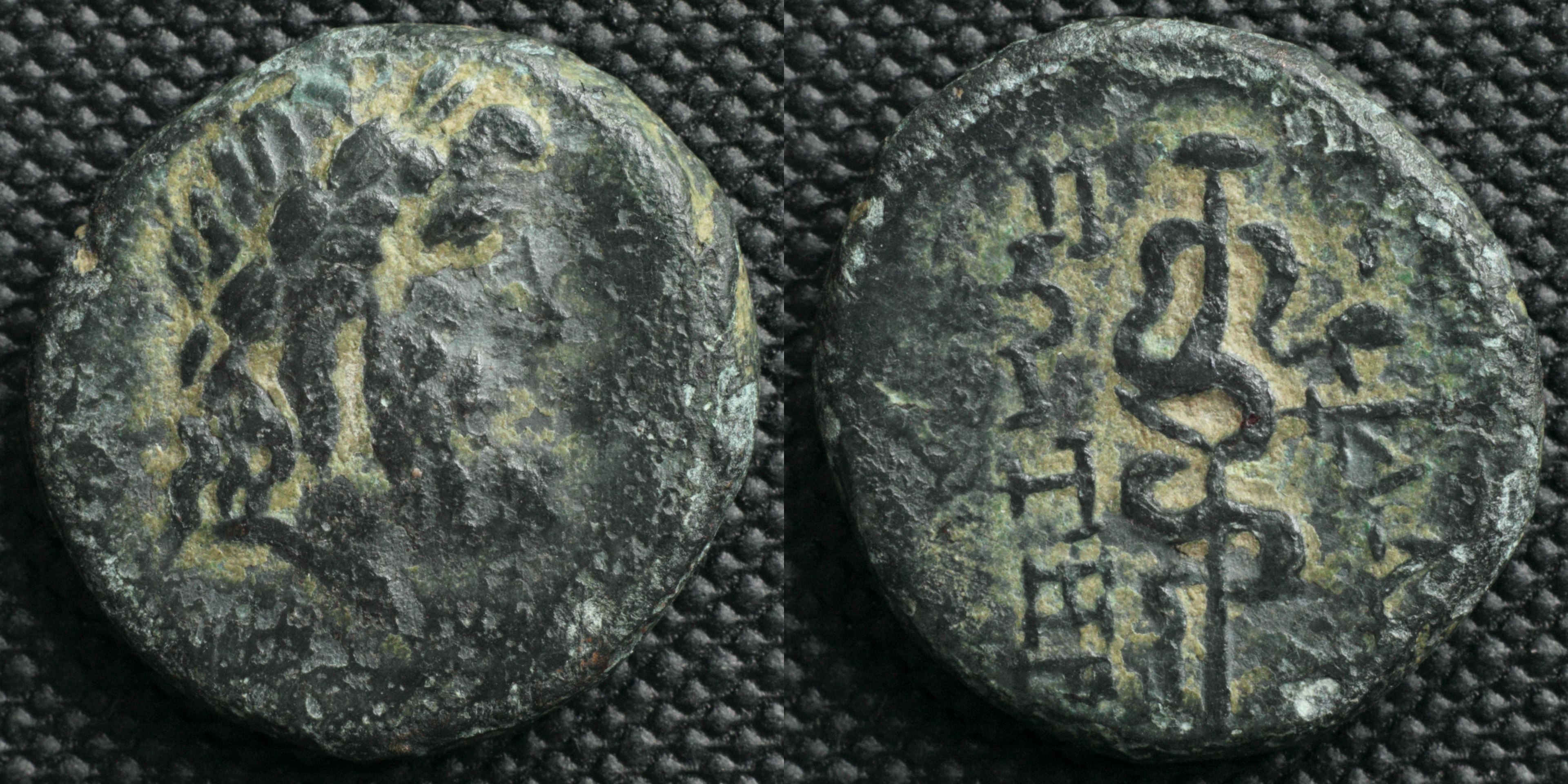
Reverse: a serpent-entwined staff; ΑΣΚΛΗΠΙΟΥ / ΣΩΤΗΡΟΣ
Die Orientation: -
Weight: 3.98 g
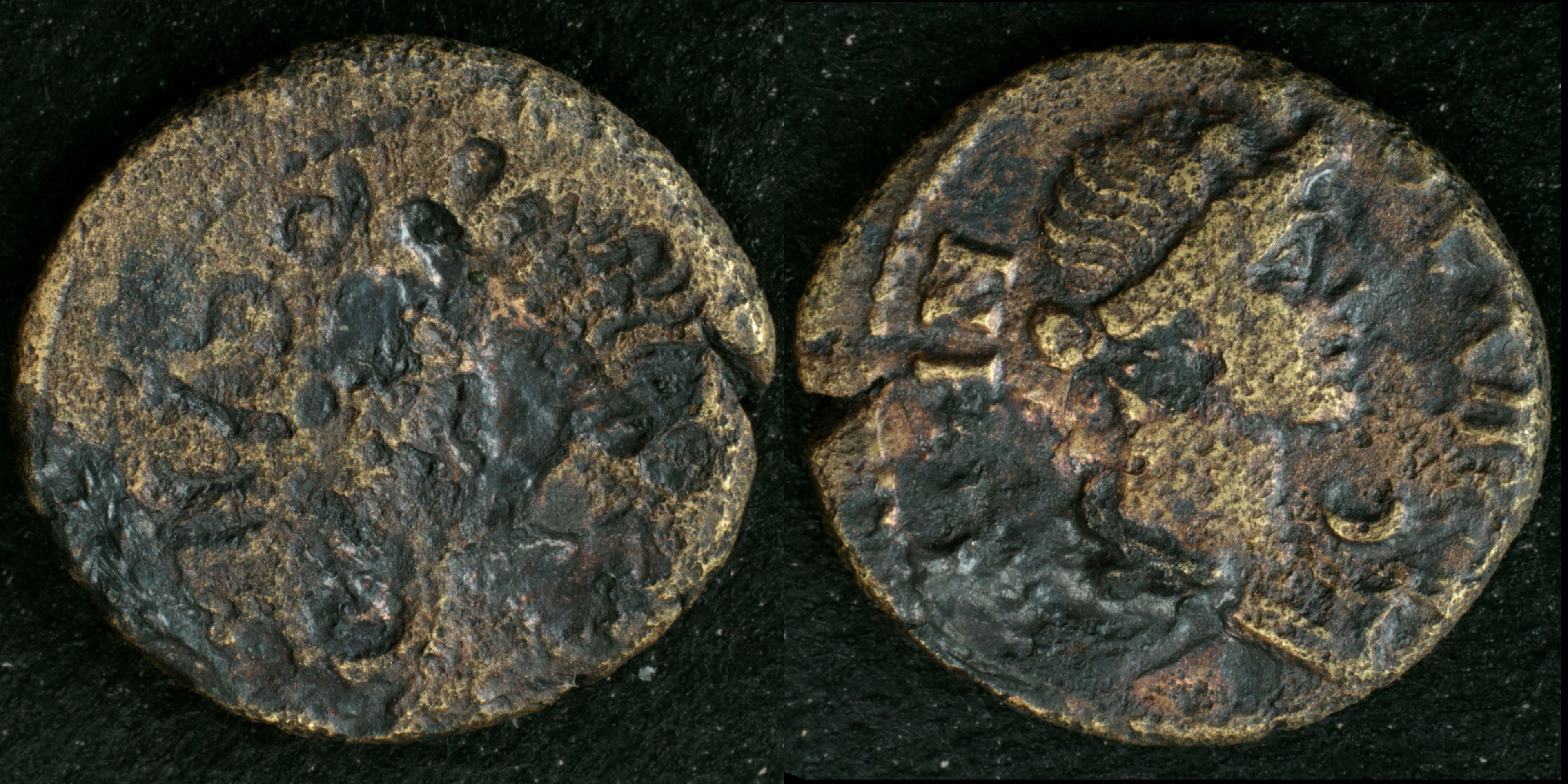
Reverse: draped turreted bust of Roma right; ΘEAN PΩ_MHN, crescent
Die Orientation: -
Weight: 2.38 g
.jpg)
Reverse: trophy; AΘHNAΣ / NIKHΦOPOY, ΠEPΓ ?
Die Orientation: -
Weight: 5.56 g
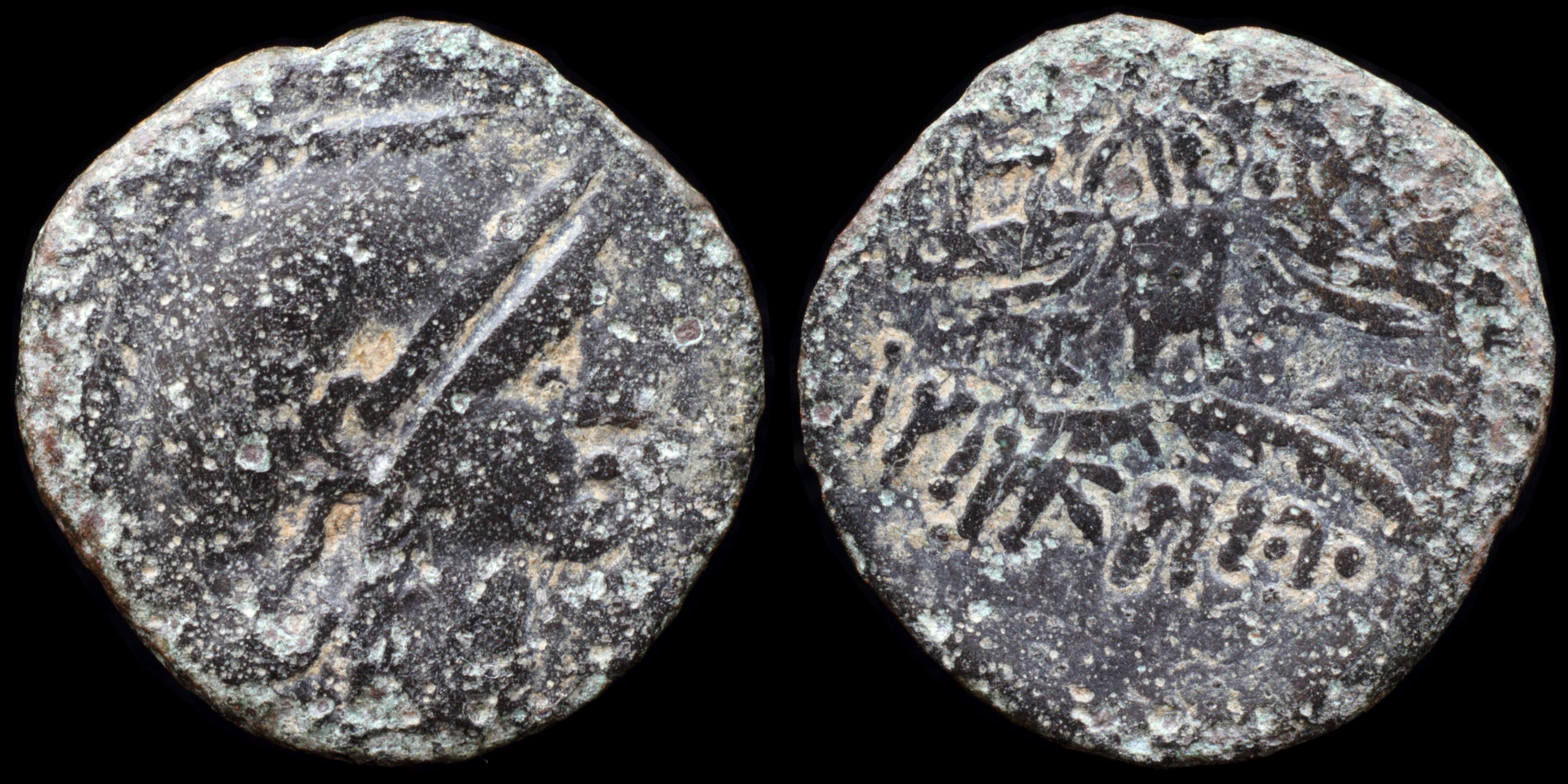
Reverse: owl standing facing on palm branch, wings open; AΘH_NAΣ / NIKHΦOPOY, monogram ? _ monogram ?
Die Orientation: -
Weight: 2.19 g
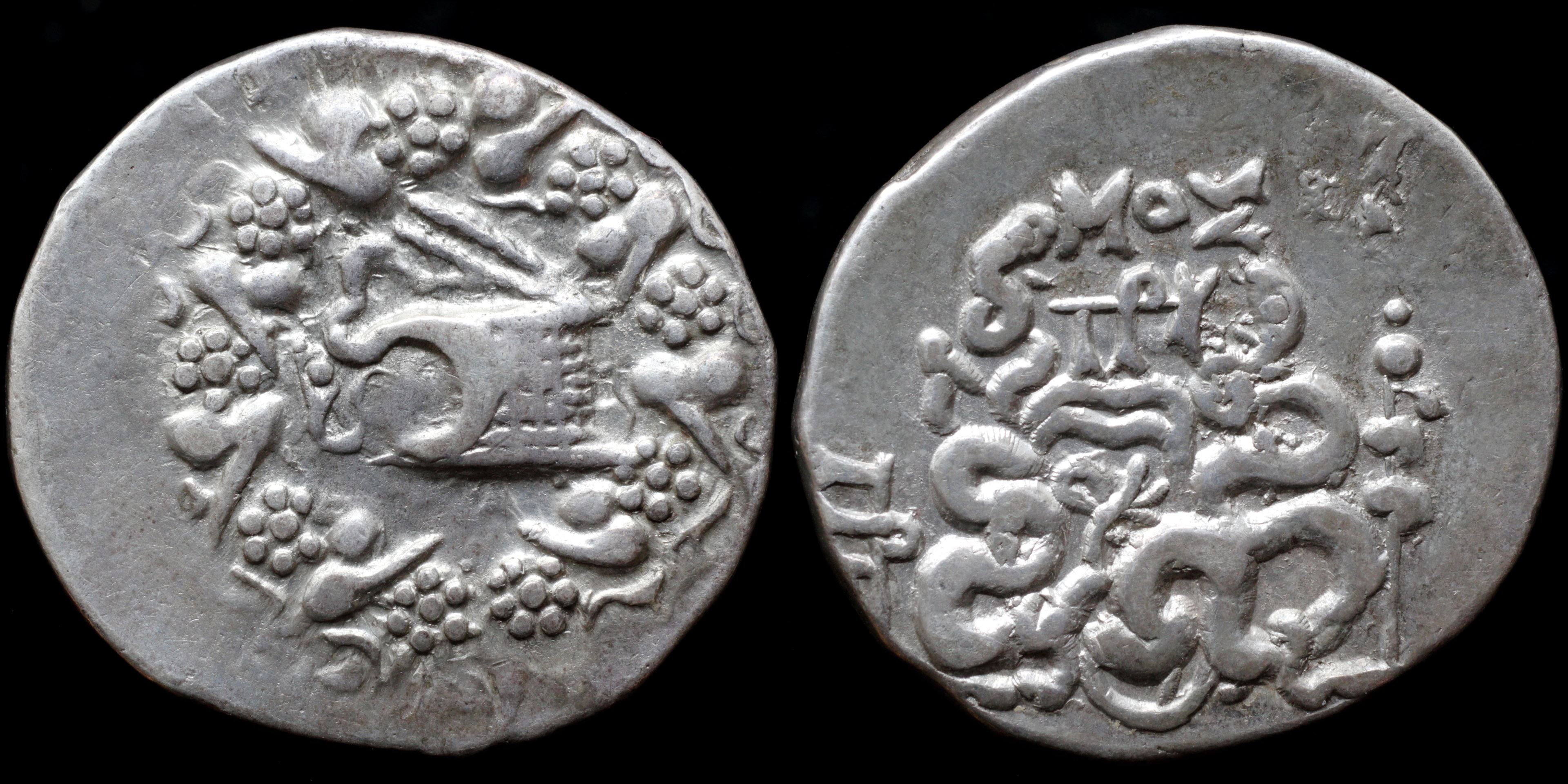
Reverse: coiled snakes, flanking ornamented bow-case, thyrsos right; MOΣ / (ΠYP) / (ΠEP)
Die Orientation: -
Weight: 12.3 g
.jpg)
Reverse: Two bulls
Die Orientation: -
Weight: 3.94 g
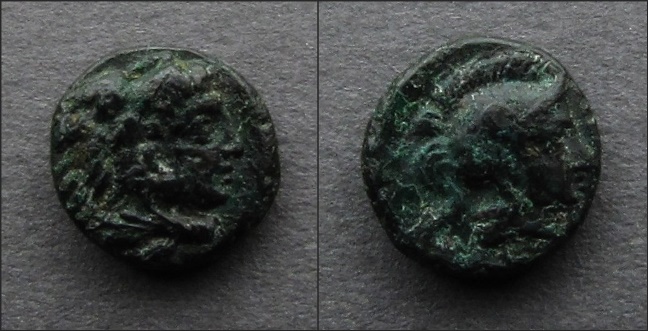
Reverse: ΠEΡ, head of Athena right in crested helmet.
Die Orientation: 6 H
Weight: 1.09 g
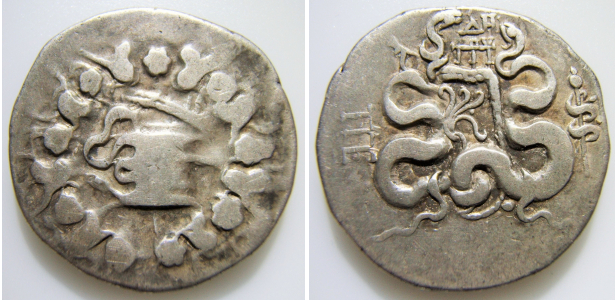
Reverse: ΩΠΓΡ / ΔH - ΩΠΓY - ΩΠΓΡ (Perganom) monogram to left of two serpents entwined around bow and bowcase. ΔH over ΩΠΓY monogram above, serpent-entwined thyrsos in right field.
Die Orientation: 11 H
Weight: 12.35 g
Ex Roma Numismatics Limited 26.08.2017. Added onto the Wildwinds Site.
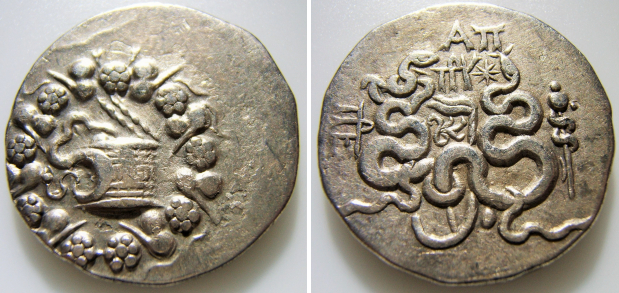
Reverse: ΠEΡΓ / AΠ / ΠΡY * - Two serpents entwined around a bow in bowcase. ΠEΡΓ monogram to left, magistrate's initials AΠ over ΠΡY monogram and star above, serpent-entwined thyrsos in right field.
Die Orientation: 12 H
Weight: 12.01 g
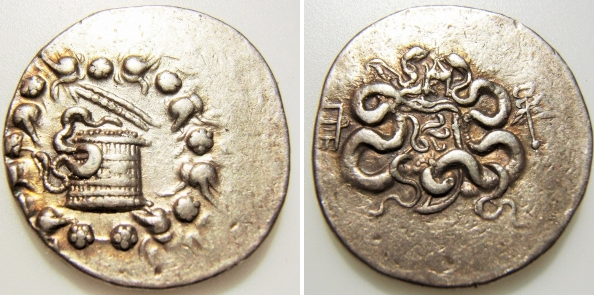
Reverse: Two coiled serpents with heads erect, between them a bow case, ornamented with an aplustre, containing a strung bow, in field to right a winged caduceus, ΠEΡ city monogram to left, and monogram between serpent heads.
Die Orientation: 12 H
Weight: 12.47 g
